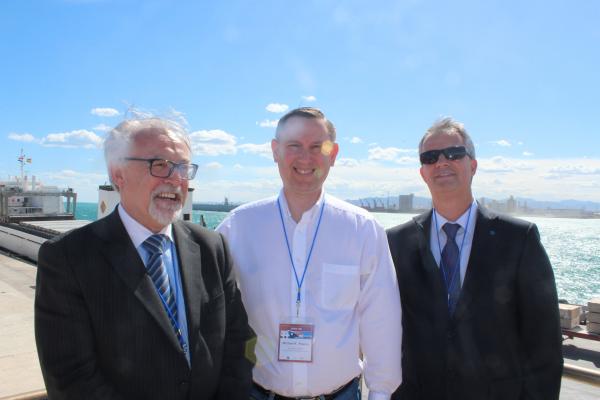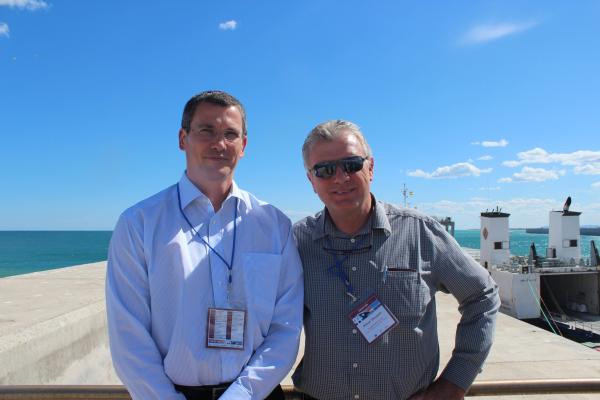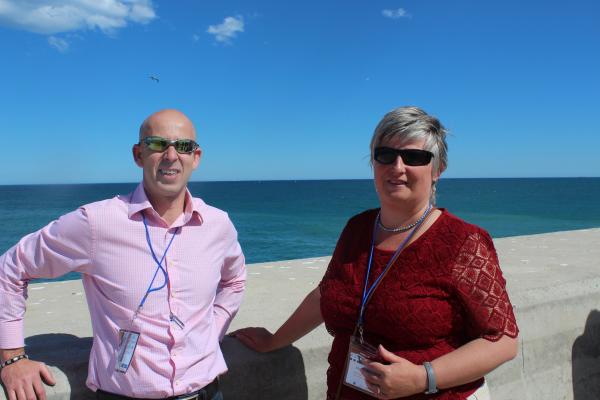g src=”/wp-content/uploads/other/f695-26.jpg” alt=”MedCruise: Western Mediterranean Opportunities and Challenges” width=”800″ height=”533″ style=”padding-right: 10px; display: block; margin-left: auto; margin-right: auto;” />
The Western Mediterranean will continue to see a build-up of capacity, according to cruise line executives speaking at the MedCruise general assembly in Castellon, Spain, May 21 – 23. Key points brought up by the executives included better port cost transparency, no vendor monopolies and more attention being paid to guest satisfaction.
This year is expected to be strong with further growth in 2015, including the Allure of the Seas, and a spike in 2016 with more new ships. The executives expressed optimism about the economic recovery in North America and noted that Europe was starting to pick up as well and that they are focused on growing their European sourcing.
Southern European ports leave room for improvement, however, according to Simon Douwes, director of deployment and itinerary planning for Holland America Line. He said that the line’s highest ranking ports in terms of passenger satisfaction were in Australia/New Zealand and Northern Europe. But having the lowest fuel costs was a huge point in the Western Mediterranean’s favor as most ports are close together for short sailing distances and there are no ECA restrictions to comply with.
Deciding port factors include guest satisfaction, geographic location, shore excursion opportunities, port costs and operational aspects, according to Kay-Uwe Maross, senior manager of destinations for AIDA Cruises
One point Maross made is that he does not want to pay for services the cruise line does not use. Meaning that if a port is charging for having a turn-around terminal, while AIDA is only making transit calls, he does not want to pay the additional cost. He also noted that volume discounts are welcome. Monopoly services were another issue that AIDA sees as an increasingly problem. Maross said that allowing competing companies to handle garbage disposal, for instance, leads to better pricing and more creative solutions.
According to Michael Pawlus, director of strategic itinerary planning and scheduling for Silversea Cruises, the Western Mediterranean is its number one sailing region from March to November. Ports are selected based on guest interest and satisfaction, port and fuel costs, evening and overnight stays, a mix of experiences, shore excursion availability, and their marketability. The ideal service speed between ports is between 13 and 15 knots.
The Mediterranean is core to Costa Cruises’ programs, said Susanna Illiano, port area coordinator for the Mediterranean, Caribbean, Red Sea and Arab Gulf. She said that Costa calls at 93 ports in the Mediterranean, offering interporting in 32.
A key factor going forward was transparency of port costs, according to Illiano. She added that Costa needs to understand what it is paying for. In this picture, port agents play a key role and they need to be proactive and transparent as well, in addition to being financially stable. Illiano said that Costa will do random audits to ensure the quality of its port agents.
For the Royal Caribbean brands, Mediterranean deployment for 2014 will be consistent with 2013, according to Adam Sharp, manager of port operations and guest services for Europe.
A turning point will come this fall with the Oasis of the Seas sailing a few cruises out of Barcelona, before the Allure sails a full summer season in 2015. With the bigger ship, however, come issues such as port and city congestion, which he said Royal Caribbean is working on.
For Fred. Olsen Cruise Lines, Peter Deer, commercial director, said the challenge is that most of the passengers have already travelled in the Mediterranean, and there is competition, offering cheap flights and stays in the region. Thus, the Mediterranean is a low-revenue alternative for the brand during the summer when it tends to concentrate on Northern Europe.
So what can ports do to attract Fred. Olsen? Offer something different to encourage us to come, Deer said, including gifts for passengers, entertainment and special events. Thirty to 50 percent of Fred. Olsen’s passengers take shore excursions, according to Deer, which means up to 50 to 70 percent will go ashore on their own. Hence, it is important that ports provide good, relevant information to these passengers as well.
A full report follows in the next issue of the Cruise Industry News Quarterly magazine.
Photos: Miguel Rojo, commercial manager for the Castellon Port Authority, Michael Pawlus, director of strategic itinerary planning and scheduling for Silversea Cruises, and Roberto Arzo Cubero, mananging director of the Castellon Port Authority (top); Kay-Uwe Maross, senior manager of destination planning for AIDA, and Simon Douwes, director of deployment and itinerary planning for Holland America Line; and Peter Deer, commercial director, and Clare Ward, senior commercial planning manager of Fred. Olsen Cruise Lines






